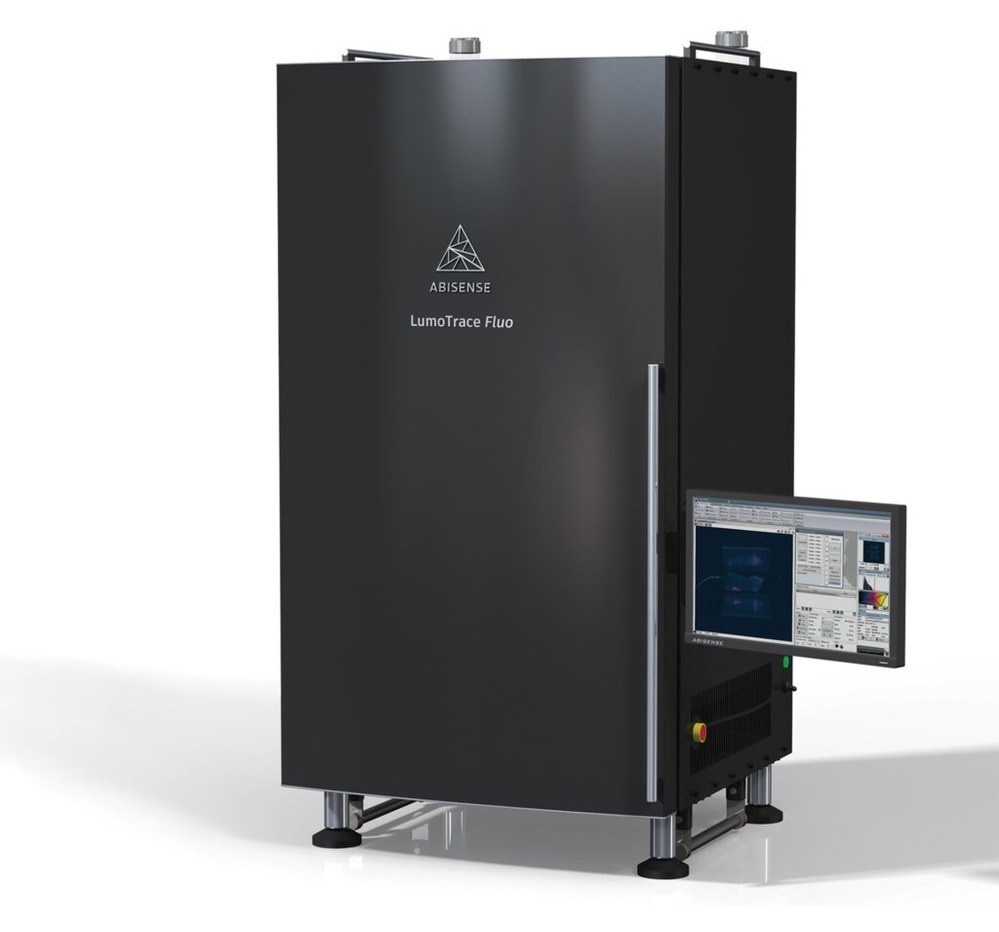Catalog
Equipment
2226 products
View:
- Selected: 0Areas of use
- Selected: 0Item names
- Selected: 0Manufacturer
- Selected: 0Made in
- Selected: 0Additional
View:
2226 products
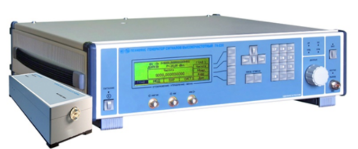
High-frequency signal generator G4-235, G4-236
Created on the basis of the G4-230 generator. Remote frequency converters extend the frequency ranges up to 53.57 GHz (G4-235) and up to 78.33 GHz (G4-236).
The generators are capable of operating both independently and as part of automated measuring systems with USB and IEEE-488 (CPC) interfaces.
Technical specifications
The frequency range at the output of the base unit is from 5 to 20 GHz
Frequency range at the output of the frequency converter (G4-235) from 37.5 to 53.57 GHz
The frequency range at the output of the frequency converter (G4-236) is from 53.57 to 78.33 GHz
Frequency tuning discreteness 0.001 Hz
The main error of the frequency setting is ± 3x10-7 Hz
The range of setting the signal power level at the output of the base unit is from minus 110 to 13 dBm
The range of setting the signal power level at the output of the frequency converter (G4-235) is from 0 to 13 dBm
The range of setting the signal power level at the output of the frequency converter (G4-236) from 0 to 10 dBm
The basic error of setting the reference power level is ± (1.0 – 2.5) dB
Metrological characteristics of the generator in FM operation mode:
- frequency range of the modulating signal from 1 Hz to 20 kHz
- frequency deviation setting range (taking into account the carrier frequency value) from 1 Hz to 200 kHz
- the main error of the frequency deviation setting is ± (5 – 18)%
Metrological characteristics of the generator in AM operation mode:
- frequency range of the modulating signal from 0.05 to 5.0 kHz
- the range of setting the amplitude modulation coefficient from 1 to 50 %
- the basic error of setting the amplitude modulation coefficient ± (0.15 M + 0.2)%
Metrological characteristics of the generator in the IM operation mode:
- the duration range of modulating pulses from 100 ns to 20 s
- the range of the modulating pulse repetition period from 140 ns to 30 s
- the difference in the duration of the output RF pulses from the duration of the modulating pulses ± 100 ns
Operating temperature range from 5°C to 40 °C
AC power supply 220 V, 50 Hz
Power consumption, no more than 150 VA
Overall dimensions, mm 498x136x487
Weight, not more than 20 kg
TEKHNOYAKS
Moscow
Produced in: Moscow
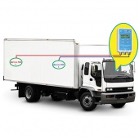
The set for temperature control during transportation of perishable food and ILP
The body of the refrigerator for transportation is equipped with two temperature sensors and a two-channel meter recorder IS-203.2, which is installed in the driver's cab.
The meter-recorder IS-203.2 is a microprocessor device that allows the driver to visually monitor temperature changes. This device is equipped with a non-volatile storage device and a real-time clock, has two measuring channels. The measurement results are stored in a non-volatile memory with a volume of 15,000 measurements per channel, followed by data transfer to a computer (RS 232 or USB) for visualization in the form of tables and graphs.
Features of the kit for temperature control of food and ILP
Measured temperature range: -50...+100°C.
Resolution: 0.1°C.
The limit of permissible absolute error: ± 0.5 ° C
TEKHNO-AS
Kolomna
Produced in: Kolomna, Moscow region
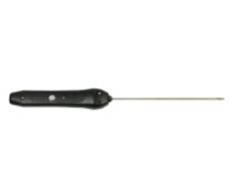
Smart probe air high-precision L=150 mm CVV.150P with built-in flash memory
from
13 110 ₽
Designed to measure the temperature of various materials by direct contact of the probe with the measuring object
Smart probe air high-precision L=150 mm CVV.The 150P with built-in flash memory is designed to measure the temperature of various materials by directly contacting the probe with the measuring object and transmitting the measured value via Bluetooth to devices with the ThermoMonitor. The Android program is installed.
Operating conditions of the SZVV.150P smart probe
Ambient temperature, °C: -20...+55.
Relative humidity, %: not more than 80 at T=35 °C.
Atmospheric pressure, kPa: 86...106.
Functionality of the smart probe CVV.150P
Measurement of physical quantities with a resolution of 0.01.
Recording of measured values at intervals from 5 seconds to 23 hours 59 minutes 59 seconds (only smart probes with built-in memory).
Transmitting data about measured physical quantities via Bluetooth to a device with the ThermoMonitor. The Android program is installed.
Transmitting information about the state of charge of the built-in battery via Bluetooth to a device with the ThermoMonitor, Android program installed.
Automatic transition to sleep mode after 50 seconds.
The ability to connect an external power supply.
Possibility of calibration.
TEKHNO-AS
Kolomna
Produced in: Kolomna, Moscow region
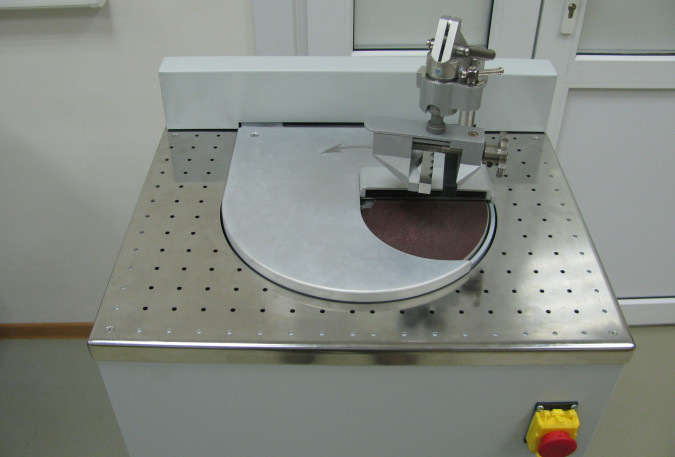
Device for preparation of metal samples
A device for preparing metal samples for spectral analysis.
For the preparation of metal samples, an emery cloth or paper with a given size and abrasive material is used.
The rotation speed is 1500 revolutions per minute.
A quick stop of the motor is provided by an automatic control unit.
There is a version in a housing made of composite materials with two discs, each can have its own type of abrasive.
VMK OPTOELEKTRONIKA
Novosibirsk
Produced in: Novosibirsk
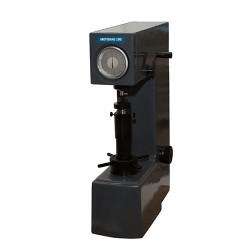
Metolab 100 Rockwell Hardness Tester
METOLAB 100 is an analog stationary hardness tester with manual loading, designed to measure the hardness of various materials according to the Rockwell method, HRA, HRB and HRC scales, in accordance with current standards, equipped with an analog clock–type indicator.
Structurally, the METOLAB 100 hardness tester is a stationary device consisting of a load application mechanism and the measuring unit itself. The principle of operation of the device is based on the indentation of a diamond cone or steel ball tip into the material under study, followed by measurement of the resulting print.
Due to its ease of operation, the stationary METOLAB 100 hardness tester can find its application in a wide variety of industries and production, as well as in educational institutions of various levels in the training of specialists.
The stationary METOLAB 100 Rockwell hardness tester is included in the State Register of Measuring Instruments of Russia (GRSI) and comes with a certificate of primary verification (on request). The number in the GRSI is 65128-16.
Distinctive features of the stationary METOLAB 100 Rockwell hardness tester:
Simple and convenient both in operation and maintenance;
Wide range of measured values;
High degree of reliability due to the absence of electronic components in the design of the hardness tester;
The device operates without power.
Basic delivery package:
Stationary METOLAB 100 hardness tester;
Indenter with a ball (1.5875 mm) - 1 pc.;
Conical diamond indenter (120°) - 1 pc.;
Flat table SP1 (60 mm);
V-shaped prismatic table SRP1 (40 mm);
Rockwell hardness measures - 1 set;
User Manual.
Additional information: GOST standards and regulatory documents establishing requirements for the METOLAB 100 Rockwell hardness tester:
GOST 8.064-94 GSI. State verification scheme for hardness measuring instruments on the Rockwell and Super-Rockwell scales;
GOST 9013-59 Metals and alloys. Rockwell hardness measurement method. Scales A, B, C;
GOST 22975-78 Metals and alloys. Rockwell hardness measurement method at low loads (Super-Rockwell);
GOST 23677-79 Hardness testers for metals. General technical requirements.
Metolab
Moscow
Produced in: Moscow
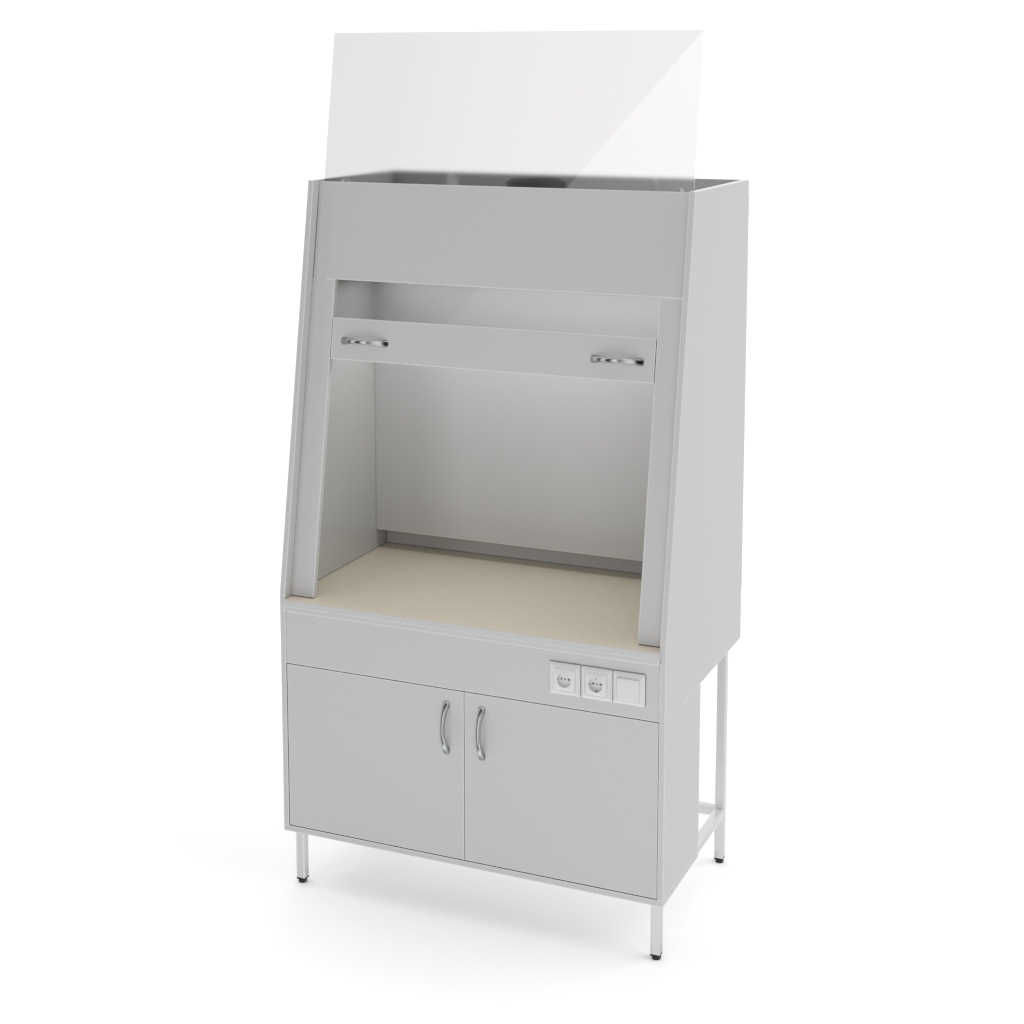
NV-1250 SHV-BC Fume cupboard with countertop made of monolithic ceramics
from
46 412 ₽
THe Kors NV-1250 SHV-BC laboratory fume cupboard is a single—frame cabinet with a width of 1240 mm and with a table top made of monolithic ceramics.
External dimensions of the cabinet (W×D×H): 1240×700×1960 mm.
Dimensions of the working area (W×D×H): 1208×660×1072 mm.
Table top: monolithic ceramic.
Convenient fume cupboard for comfortable work in the laboratory
The table top made of monolithic ceramics is moisture-resistant, perfectly withstands high temperatures. Due to the lack of seams, ceramic granite tiles are better resistant to chemicals and heat. It is possible to place high-temperature equipment on it.
The working area is closed by a single lifting frame with a counterweight. There are two exhaust zones in it: the hood of the exhaust box and the level of the countertop. Diameter of the flange for connection to the ventilation system: 150 mm.
Working area size (W×D×H): 1208×540×750 mm. Please note that the cabinet narrows upwards. At a height of 50 cm, the depth of the working area will be 410 mm, at a height of 70 cm it will be 365 mm. If you need to place high equipment, then make sure that it corresponds to the dimensions of the camera, otherwise you will not be able to close the cabinet.
The height of the raised glass above the cabinet: 510 mm, that is, when the glass is raised, the height of the cabinet will be 2470 mm.
The working area is illuminated by a fluorescent lamp (included in the package). The switch is located on the right side of the cabinet, next to the sockets.
The fume cupboard is equipped with two sockets, one of them with grounding. Sockets have the IP20 degree of protection, maximum load: 1.5 kW.
The base of the cabinet is an all-welded metal frame in powder coating. The side laminated panels (chipboard 16 mm thick) are edged on the facade with a durable PVC edge 2 mm thick, which increases their impact resistance and mechanical strength.
The cabinet legs are adjustable in height within two centimeters, allowing you to place the cabinet even on a rather uneven floor.
And if we need a cabinet for muffle furnaces?
If you need a cabinet to accommodate high-temperature equipment, you might be interested in the ballscrew models. The depth of the countertop is specially increased so that you can put an oven or a cabinet.
NV LAB
Moscow
Produced in: Moscow, Moscow region
Oscilloscope S1-176
It is intended for the study of periodic electrical signals by visual observation and measurement of their amplitude and time parameters on the scale of the CRT screen in the frequency band 0-50 MHz, as well as for monitoring the parameters of two- and three-pole devices using a component tester.
Technical specifications:
Number of channels 2
Bandwidth 0 - 50 MHz
Deviation coefficients of 2 mV/div - 20 V/div (step1-2-5)
Installation error ± 3%, ± 4% with a 1:10 divider
Rise time of PH <= 7 nsec
Input impedance is 1 mOhm/25 pF, with a divider of 1:10 - 10 mOhm/23 pF
Harsh operating conditions (-10°C to +40°C)
Bandwidth 0 - 50 MHz
Two channels
Indication of deviation and sweep coefficients on LED matrices
Tenfold stretching of the sweep
Calibrator 0.6 V, 1 kHz (± 1%)
X-Y mode
Built-in Component Tester
Screen 80x100 mm
Weight 6,8 kg
MNIPI
Minsk
Produced in: Belarus, Minsk
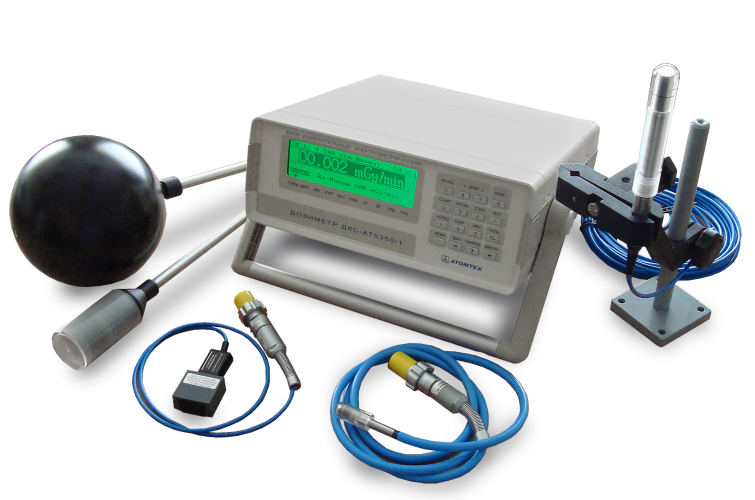
DOSIMETER DKS‑AT5350/1
A high-precision dosimeter with extensive functionality: measurement of DC power, electric charge, charge by numerical integration of current, kerma and kerma power in the air, kerma by numerical integration of kerma power and other radiological quantities.
Composition of the dosimeter:
- Electrometric measuring unit (electrometer)
- PTW-Freiburg ionization chambers (Germany) to choose from:
TM23342 Flat-parallel X-ray (volume 0.02 cm3)
TM31010 Cylindrical (volume 0.125 cm3)
TM30010 Thimble (volume 0.6 cm3)
TM23361 Cylindrical (volume 30 cm3)
TM32002 Spherical (volume 1000 cm3)
Atomtekh
Minsk
Produced in: Belarus, Minsk
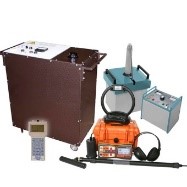
Portable Electrical Laboratory for testing and searching for cable damage by acoustic and induction method Athlete KAI-2.501
• Appointment Athlete KAI-2.501
o Search for a live cable.
o Detection of the passage of hidden communications (metal pipelines, cable lines).
o Preliminary detection of the distance to the place of damage.
o Search for places of cable damage by acoustic method.
o Search for places of cable damage by electromagnetic means.
o Cable insulation test.
o The presence of the "Friend-Foe" mode.
TEKHNO-AS
Kolomna
Produced in: Kolomna, Moscow region

"Homeofficer" Optimal kit
from
48 981 ₽
It is designed to measure the temperature and humidity of indoor air, the surface of heating devices, water temperature in heating and hot water supply systems.
•
TEKHNO-AS
Kolomna
Produced in: Moscow
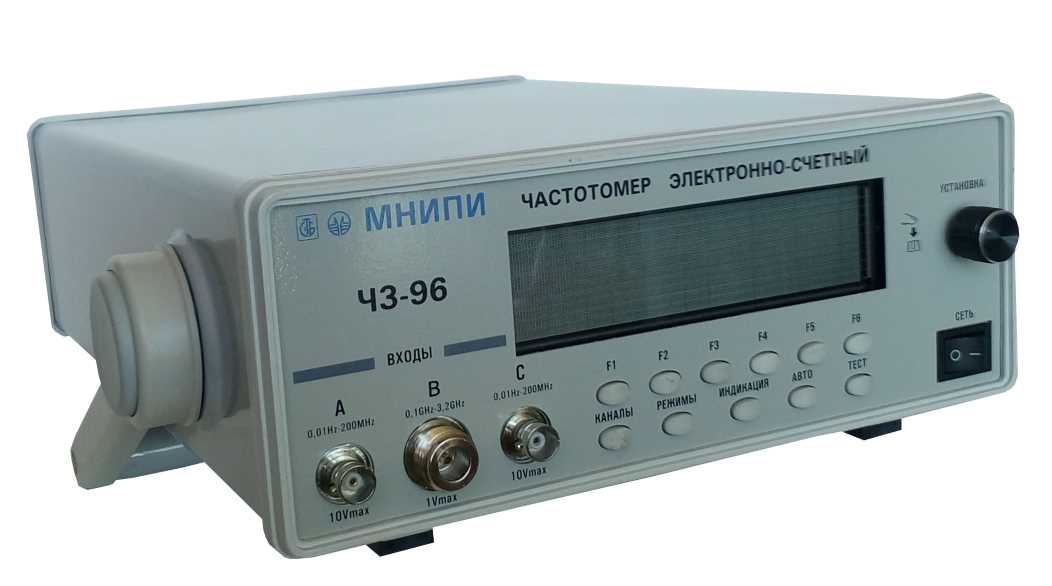
Picoammeter A2-4
System meter of small currents. The device allows to make measurements in almost the entire range of currents. The picoammeter is characterized by high performance, which is important for its use as part of automated measuring systems.
Technical specifications:
Current measuring range 1x10-14 - 1x10-2 A
Error for the range 10-11, 10-10 ±[0.5+0.025(lk/lx-1)]%
for the range 10-9, 10-8 ±[0.25+0.01(lk/lx-1)]%
for the range 10-7, 10-6,10-5, 10-4,10-3, 10-2 ±[0,1+0,01( lk/lx-1)]%
The time of setting the readings is 2x10-2 - 2x10-5 s
Supply voltage 230 (±20) V, frequency 50 (± 0.5) Hz
Power consumption 10 VA
Overall dimensions (HxWxD) 105x284x366 mm
Weight 3.5 kg
Operating temperature 5 - 40 °C
Humidity 80% at 25 °C
MNIPI
Minsk
Produced in: Belarus, Minsk

Immitance Broadband Analyzer E7-28
Technical specifications:
Extended frequency range 25 Hz–10 MHz
The basic error is ±0.1 %
The level of the measuring signal is 5 mV – 1 V S.K.z.
Offset voltage (0 – 40) V
The discreteness of the operating frequency setting is 1 Hz
Graphical analysis of measured values in a given frequency range
USB 2.0 interface
MNIPI
Minsk
Produced in: Belarus, Minsk
